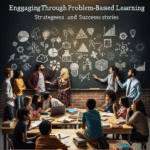
Introduction
In a world teeming with variables, biases, and unforeseen factors, the integrity of research design is paramount. When conducting experiments, whether in the social sciences, healthcare, or education, one fundamental principle stands out: random assignment. The Power of Random Assignment: Ensuring Fairness in Research and Experimentation is not just a mantra for researchers; it’s an essential practice that cultivates trust, validity, and replicability in scientific inquiry.
Imagine conducting an experiment that could change lives—only to discover that its outcomes were influenced by external biases. This is where random assignment comes into play, acting as a guardian against such pitfalls. Let’s explore why random assignment is the cornerstone of fair experimentation and the transformative power it holds.
The Role of Random Assignment in Research
What Is Random Assignment?
At its core, random assignment is a technique where participants in a study are assigned to different groups using randomization methods, ensuring that each subject has an equal chance of being placed in any group. This method serves several critical purposes:
- Minimizing Bias: By randomly assigning subjects, researchers can eliminate selection bias.
- Controlling Confounding Variables: Randomization helps control for variables that could affect the outcome but are not the focus of the study.
- Enhancing Generalizability: When a sample reflects the broader population, findings are more likely to be applicable outside the study setting.
Why Is It Essential?
Using The Power of Random Assignment: Ensuring Fairness in Research and Experimentation has several advantages:
- Credibility: Research outcomes become more credible as randomization minimizes biases.
- Valid Conclusions: Random assignment leads to more valid conclusions about cause-and-effect relationships.
- Reproducibility: Findings become easier to reproduce in future studies, fostering a reliable body of knowledge.
Types of Random Assignment
There are various methods researchers can utilize to implement random assignment:
- Simple Random Sampling: Each participant has an equal chance of being assigned to any group.
- Stratified Random Assignment: Participants are divided into subgroups (strata) and then randomly assigned, ensuring representation of key characteristics.
Case Study: The Impact of Random Assignment in Education
Background
In 2010, researchers conducted a study on the effectiveness of a new teaching method in secondary schools. The study involved two groups of students—one taught using traditional methods and the other using the new approach. With The Power of Random Assignment: Ensuring Fairness in Research and Experimentation at play, students were randomly assigned to the two groups.
Results
The new teaching method led to a significant improvement in student performance, suggesting that innovative approaches could enhance learning outcomes. The random assignment ensured that any differences observed could be attributed to the teaching methods alone, free from biases related to student demographics or prior academic performance.
Analysis
This case study exemplifies the essential nature of random assignment. Without it, researchers might have mistakenly attributed differences in performance to inherent student qualities rather than the teaching method itself.
Section: Addressing Common Misconceptions
Misconception 1: Random Assignment Is the Same as Random Sampling
While both methods involve randomization, random sampling refers to how participants are selected from a population, whereas random assignment deals with how they are allocated to different groups.
Misconception 2: Random Assignment Isn’t Necessary for All Studies
Even in observational studies, where randomization might not be feasible, implementing random assignment where possible enhances the validity of findings.
Misconception 3: Random Assignment Guarantees Equal Groups
While random assignment helps balance out groups concerning known and unknown characteristics, it does not guarantee that groups will be identical.
Misconception 4: Only RCTs Require Random Assignment
Random assignment is valuable in non-randomized studies as well, enabling researchers to strengthen their conclusions.
Misconception 5: Once Random Assignment Is Done, Bias Is Gone
While random assignment reduces bias, researchers must still remain vigilant about other potential biases that could affect the outcomes.
The Broader Implications of Random Assignment
Public Health: Randomized Controlled Trials (RCTs)
Public health advancements often hinge on RCTs, where random assignment allows for fair evaluation of interventions. For instance, drug efficacy studies rely on this method to ensure that observed effects are attributable to the drug rather than other confounding factors.
Marketing and Consumer Research
In marketing research, random assignment is used to test the effectiveness of advertisements. By randomly assigning participants to receive different ads, companies can assess which is most effective in influencing consumer behavior without bias.
The Intersection of Random Assignment and Technology
As technology evolves, so does the application of random assignment. Online experiments, where participants engage with digital platforms, allow for seamless randomization. Researchers can analyze massive data sets to unveil patterns and insights, effectively utilizing The Power of Random Assignment: Ensuring Fairness in Research and Experimentation in innovative ways.
A Note on Ethical Considerations
While random assignment is a powerful tool, ethical considerations must guide its application. Researchers must ensure that participants are fully informed and that consent is obtained. In medical trials, for example, patient welfare should remain paramount, with ethical boards overseeing randomized studies.
Visualizing the Impact: Tables and Charts
To illustrate the effectiveness of random assignment, consider the following table comparing outcomes from random and non-random studies:
| Study Type | Bias Level | Valid Conclusion | Generalizability |
|---|---|---|---|
| Random Assignment Study | Low | High | High |
| Non-Random Assignment Study | High | Variable | Limited |
This table underscores why the adoption of random assignment is critical across disciplines.
Conclusion
In the realm of research and experimentation, the stakes are high. Fairness, validity, and trust hang in the balance. The Power of Random Assignment: Ensuring Fairness in Research and Experimentation is not just a technique; it’s a commitment to ethical and credible science.
As you navigate your own research endeavors, embrace random assignment as a guiding principle. By doing so, you not only enhance the integrity of your work but contribute to a more reliable and equitable body of knowledge.
FAQs
1. What does random assignment mean in research?
Random assignment refers to the process of assigning participants to different groups in a study using randomization to ensure that each participant has an equal chance of being placed in any group.
2. How does random assignment minimize bias?
Random assignment helps ensure that external variables or participant characteristics do not skew the results, thus reducing biases in the findings.
3. Can random assignment be applied to qualitative research?
While predominantly used in quantitative research, random assignment can enhance the credibility of qualitative studies by reducing bias in participant selection for interviews or focus groups.
4. Is random assignment necessary for all research studies?
While not always feasible, implementing random assignment whenever possible strengthens the reliability of findings and enhances the study’s overall credibility.
5. What are some common methods of random assignment?
Common methods of random assignment include simple random sampling and stratified random assignment, where participants are grouped based on specific characteristics to ensure balanced representation.
With the insights provided, you now have a deeper appreciation for the transformative power of random assignment in ensuring fairness and validity in research. Embrace this principle, and contribute to a future of reliable science.















